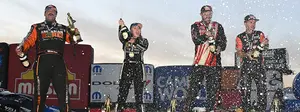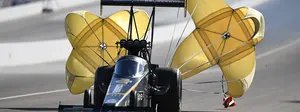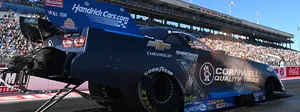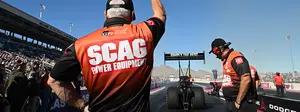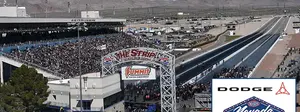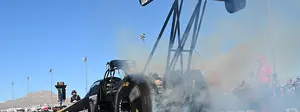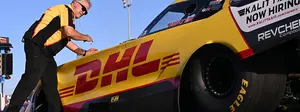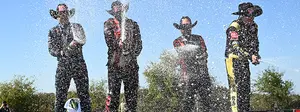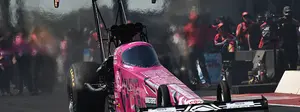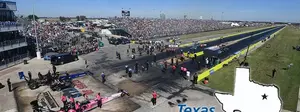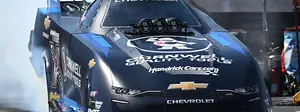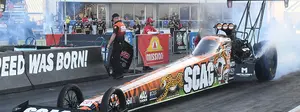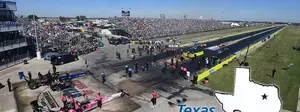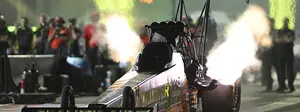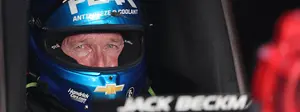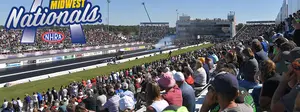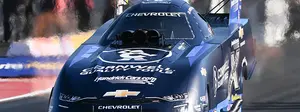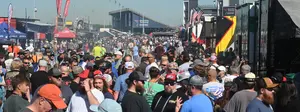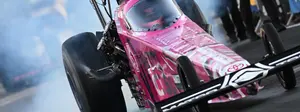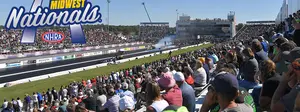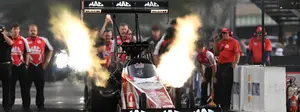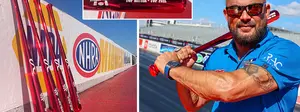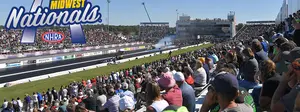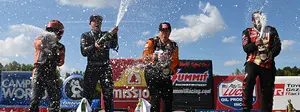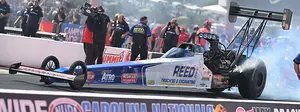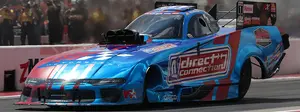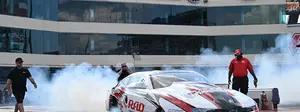

Cool air makes lots of horsepower, but for crew chiefs it's still a 'balancing act'
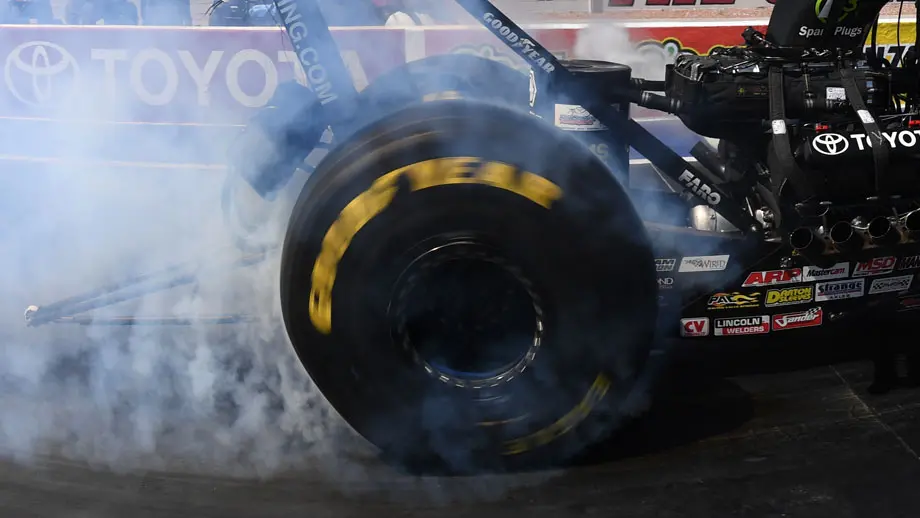
The weather for this weekend’s Magic Dry Organic Absorbent NHRA Arizona Nationals is brisk, with a projected high of 50 degrees Friday and warming to mid-60s by Sunday. Race engines love cool air and teams can brew lots of horsepower to lay down record runs, but it still needs to be managed in how it’s applied to the racetrack. That’s where the crew chiefs really earn their keep.

“When it’s cold and dry, you can make a lot of power, so first you have to manage that,” said John Medlen, co-crew chief on Jack Beckman’s Infinite Hero Dodge. “You learn how to adapt. You can take timing away from the engine, for example, or make a tire adjustment. Sometimes that means less air pressure or even running a smaller tire, which will have a flatter cord angle so it’s less prone to shaking.”
The circumference of the Goodyear rear slicks can vary by as much as two and a half inches based on a number of factors, including manufacturing and air pressure and heat, and teams go to great lengths to keep accurate tabs on them. NHRA also has a minimum air-pressure limit within which the teams must work.
The smaller tire also creates a shorter gear ratio, allowing the teams to keep the engine in a better rpm range. “Three-quarters of an inch of tire rollout is worth a primary nut; one-tenth of an inch of tire pressure [psi] is worth a gram of clutch weight, so 3/10ths is also worth a primary nut. It’s all a balancing act," added Medlen’s tuning partner Dean Antonelli.
Cold weather can always set the table for record-breaking performances, but track temperature –- too cold, too hot, or Goldilocks-just-right -– is always a factor in preparing a tune-up.
“The ideal track [condition] for a nitro car is when you can put your fingernail in the rubber and move it just a little bit, where it has some pliability” said Dave Fletcher, track specialist for Don Schumacher Racing. “So when you have a colder day and the sun isn’t out, you don’t have that, or if it’s too hot it may be too pliable, so it can become a challenge either way.
“On cold days like today, you’ve got to have heat in either the tire or the track –- ideally both -– and when you don’t have as much heat in the track – if the sun isn’t out -- you need to put that heat into the tire through a good burnout.”
That doesn’t mean you can expect teams to do long smoky burnouts like the days of yore, as that just puts extra wear and pressure on both the clutch and the supercharger -– two fickle parts of the combination

The NHRA Safety Safari presented by AAA is also always on the job, monitoring the track temperature and making adjustments as needed. They can put artificial heat into the track with the track dryer or hand torches or scrape off excess gooey rubber if it’s too hot, and they also adjust the amount of track prep as needed.
The race teams all walk the fine line between limited but desired tire slip -– “wheel speed,” as it’s commonly known -- that allows the engine to rev up, but not so much you lose traction entirely.
“You have to have enough primary weight on the clutch to get the tires spinning but not too much,” Antonelli noted. “If you don’t get enough wheel speed to get the tire free, or if the track is cold, it will just continue to take the tire off. If you take out too much clutch, it falls off, the tire runs over the [sidewall] folds, and it shakes.”
And, contrary to popular belief, teams do not like to run in the tracks of their own burnout, especially when the track is warmer, in excess of 100 degrees when the oils from the tire compound are more present. The crew chief will usually direct the car either left or right of the main “groove” of the track, do the burnout to heat and clean the tires, then direct the driver into the groove for the actual pass.
The exception -- and, of course, there’s always an exception -– is under cool conditions, where teams often will back their driver right back into his or her own burnout tracks.
The teams will be put this delicate “balancing act” to the test for the first time today at 1:30 p.m., during the first of two scheduled qualifying sessions.























